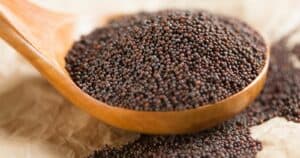Do you love it or hate it? The mere mention of cilantro can elicit strong reactions, and for good reason.
Even a small amount can ruin a meal for those who can’t stand the taste of cilantro. And for those who love it, finding a restaurant or grocery store that stocks it can be a challenge.
Cilantro is an herb that comes from the coriander plant. It has a pungent, citrusy flavor that some people find refreshing, while others find it soapy or nauseating. Despite its polarizing taste, cilantro is a popular ingredient in many cuisines, including Mexican, Thai, and Indian.
In this post, we’ll dive deeper into cilantro’s history and cultural significance, explore the science behind why some people love it and others hate it and share some tips for cooking with cilantro to bring out its best flavors.
Whether you’re a cilantro lover or a hater, you will surely learn something new and exciting about this fascinating herb.
What Is Cilantro, And Where Does It Come From?
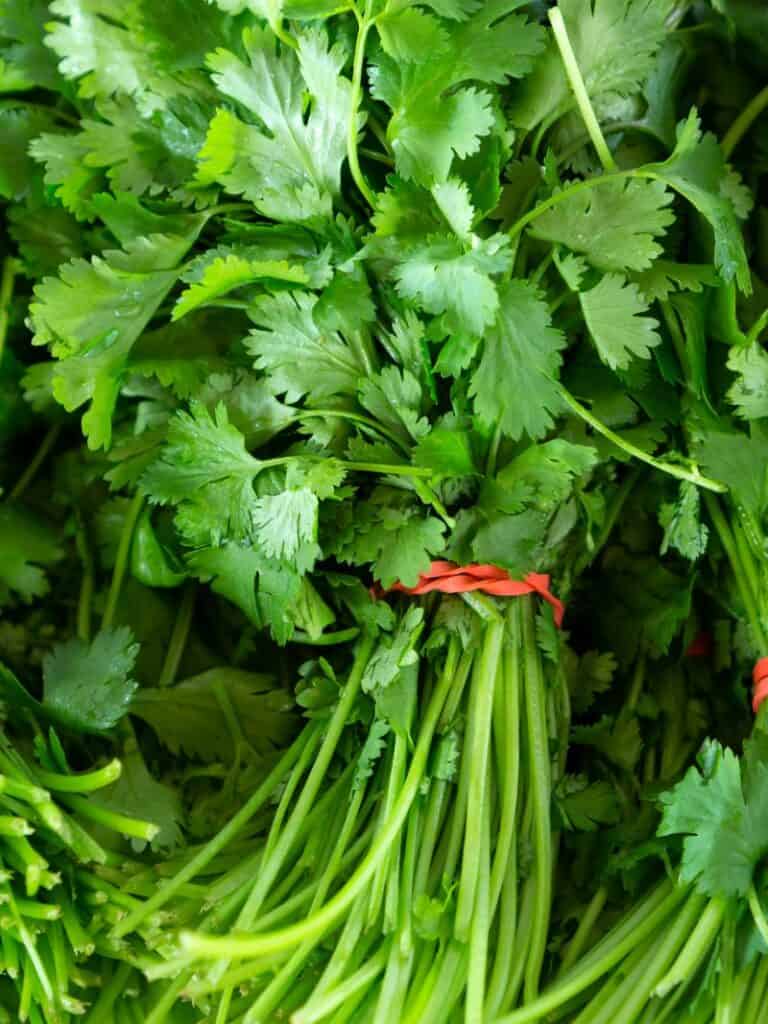
Cilantro is a surprisingly versatile herb; most people don’t even know what it is or where it comes from. It comes from the same plant, though the leaves and the seeds have different flavors. Cilantro refers to the leaves in North America, while coriander typically means ground-up seed. Internationally, you can refer to the leaves and stalks as coriander, with dried seeds referred to as coriander seeds.
Cilantro’s versatility extends beyond its culinary applications too. It is believed that eating cilantro can help make medicines more effective.
In short, it increases drug uptake when taken with medication and makes them more effective. This belief has existed since around 50 AD in China, but much of this research has not been substantiated.
Flavor Profile Of Cilantro: Fresh, Citrusy, And Slightly Soapy
Cilantro leaves may be an acquired taste, but you never knew you needed them. Cilantro has a citrusy and fresh flavor, making it the perfect addition to any dish. C
Cilantro is not just flavorful; it also contains aldehydes – organic compounds that provide aromas in food. These same compounds give cilantro its characteristic soapy aroma. While many people love the flavor of cilantro, others find it unappealing.
Whether you find cilantro appealing, it remains a herb that can transform a dish and make it unique. If you want to add more flavor to your meals with cilantro, the key is finding quality herbs for your recipes online and in person.
Health Benefits Of Cilantro: What You Need To Know
Cilantro leaves are gaining fame as the superhero of herbs – and it’s easy to see why. Not only do they add a delicious splash of flavor to any dish, but they also provide fantastic health benefits that most people don’t know about.
Consumption of cilantro leaves has been linked with reduced LDL cholesterol levels, which is important for preventing cardiovascular diseases like heart attack and stroke.
Here are some health benefits of cilantro:
- Rich in antioxidants that help protect against cellular damage and may reduce the risk of chronic diseases such as cancer and heart disease.
- It contains antibacterial properties that may help fight infections and promote a healthy immune system.
- It has anti-inflammatory effects that can help reduce inflammation throughout the body, including in the joints.
- It may aid digestion by stimulating digestive enzyme production and reducing bloating and gas.
- It contains vitamins and minerals, including vitamins C, K, and potassium, essential for overall health.
- It may help lower blood sugar levels and improve insulin sensitivity, making it a potential diabetes treatment.
- It has been traditionally used in herbal medicine to help alleviate anxiety and promote relaxation.
Culinary Uses For Cilantro
If you’re looking for new ways to incorporate cilantro into your recipes, there’s no shortage of ideas.
Here are some dishes that feature cilantro:
Pico de Gallo
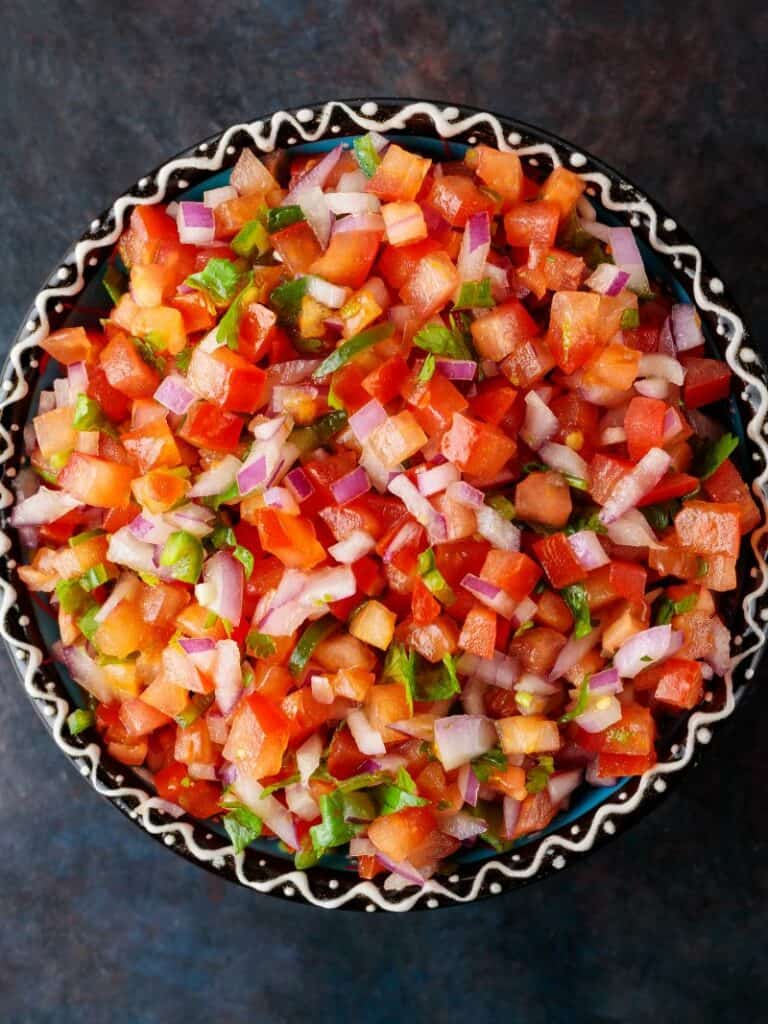
A fresh and flavorful Mexican salsa made with chopped tomatoes, onions, jalapenos, and cilantro.
Thai Green Curry
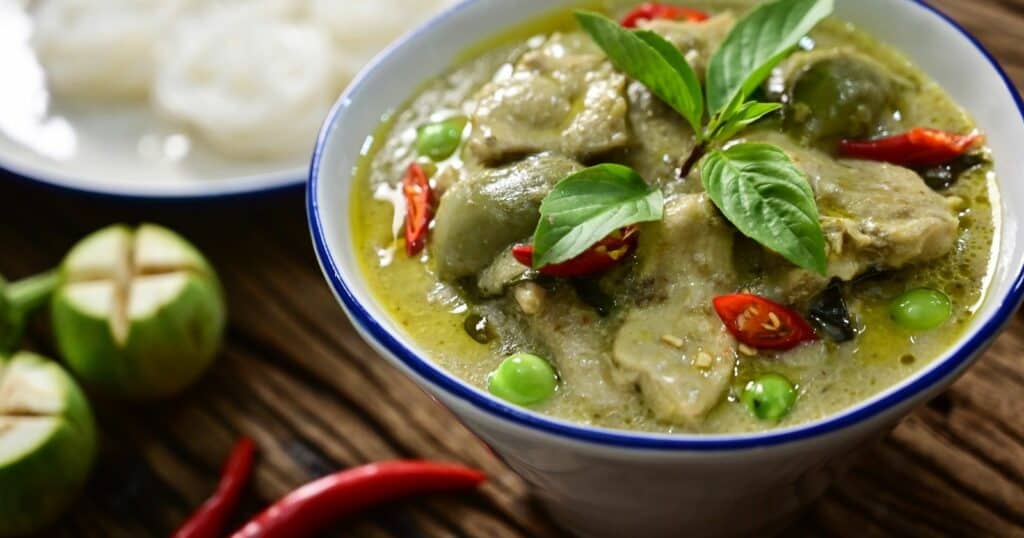
A spicy and aromatic curry that features cilantro in both the paste and the garnish.
Chimichurri Sauce
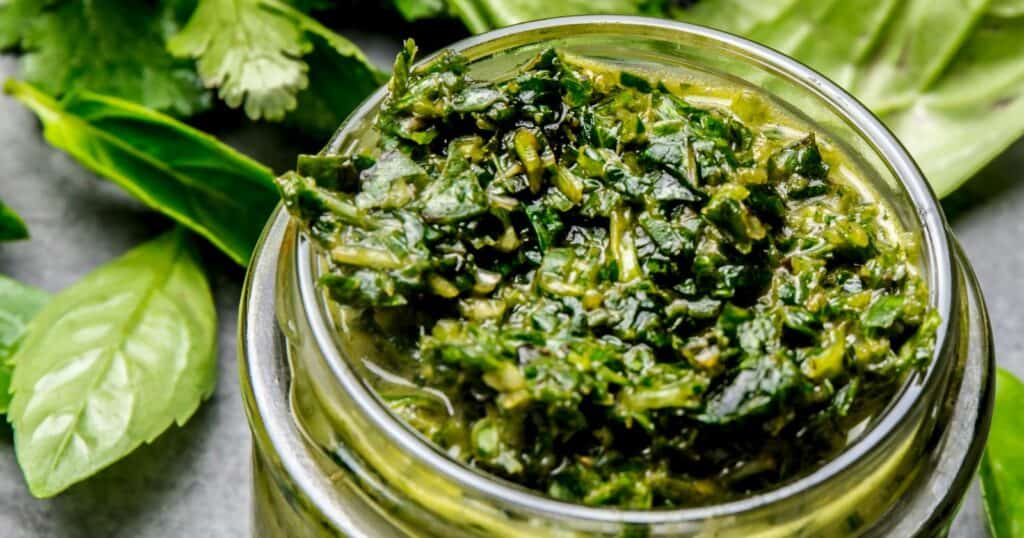
An Argentinean sauce made with fresh herbs, garlic, and olive oil, often served with grilled meats.
Guacamole

A creamy and delicious Mexican dip made with avocados, lime juice, onions, and cilantro.
Indian Chutney
A tangy and spicy condiment made with cilantro, mint, and other herbs, often served with samosas or other snacks.
Cilantro Lime Rice
A flavorful, aromatic side dish that pairs well with many cuisines.
Grilled Shrimp with Cilantro and Lime
A simple and delicious seafood dish perfect for summer grilling.
Cilantro Pesto
A twist on the classic Italian sauce made with cilantro, pine nuts, and Parmesan cheese.
These are just a few examples of how cilantro can be used in cooking. Whether you love it or hate it, there’s no denying that cilantro adds a unique and refreshing flavor to many dishes.
How to Prepare Cilantro
Cilantro is a versatile herb that adds a fresh and vibrant flavor to many dishes.
Here are some tips and techniques for preparing cilantro:
Storing
Store cilantro in the refrigerator in a container with a lid or a plastic bag with the air squeezed out to keep the cilantro fresh. It can last up to two weeks if stored properly.
Cleaning
Rinse cilantro in cool water and gently pat dry with a paper towel or clean cloth. Remove any discolored or wilted leaves.
Chopping
To chop cilantro, remove the leaves from the stems and discard the stems. Roll the leaves tightly together and slice them into thin strips. Or, use a sharp knife to chop the leaves finely.
Cooking
Cilantro can be used both as a garnish and a cooking ingredient. For a milder flavor, add it at the end of cooking. For a more intense flavor, add it during the cooking process.
Pairing
Cilantro pairs well with many ingredients, including lime, garlic, onion, and chili peppers. Use it in salsas, guacamole, curries, and salads.
Freezing
Cilantro can be frozen for later use. Blanch the leaves in boiling water for 15 seconds, then transfer them to an ice bath to cool. Drain and dry the leaves, place them in a freezer bag, and freeze them for up to six months.
These tips and techniques can help you make the most of cilantro in your cooking. With its bright and refreshing flavor, cilantro is a great herb to have on hand in the kitchen.
Where To Buy Cilantro?
Cilantro can be found at most grocery stores and markets that sell fresh produce. Look for it in the herb or produce sections, where it is usually sold in bunches.
Some stores may also sell pre-chopped cilantro in plastic containers for convenience. When purchasing cilantro, look for bright green leaves and avoid any wilted or yellowed ones.
Additionally, there are differences in cilantro based on where it was grown, with some regions producing cilantro with a more robust flavor than others.
It’s worth experimenting with different sources to find the type of cilantro you prefer.
Cilantro Substitutes
Cilantro has a unique and refreshing flavor that can be difficult to replicate, but several substitutes can be used in a pinch:
Parsley
Flat-leaf parsley has a mild, slightly bitter flavor that can work well as a substitute for cilantro.
Basil
Fresh basil has a sweet and slightly peppery flavor that can add a similar depth to dishes as cilantro.
Mint
Fresh mint has a cool and refreshing flavor that can work well in some dishes that call for cilantro.
Arugula
Arugula has a slightly bitter and peppery flavor that can add a similar zing to dishes as cilantro.
Dill
Fresh dill has a slightly sweet and tangy flavor that can work well in some dishes that call for cilantro.
Remember that these substitutes may not be a perfect match for cilantro, so you may need to adjust the amounts and other ingredients in your recipe accordingly.
It’s also worth noting that some people may dislike these substitutes just as much as they dislike cilantro, so it’s always best to check with your guests before substituting a dish.





